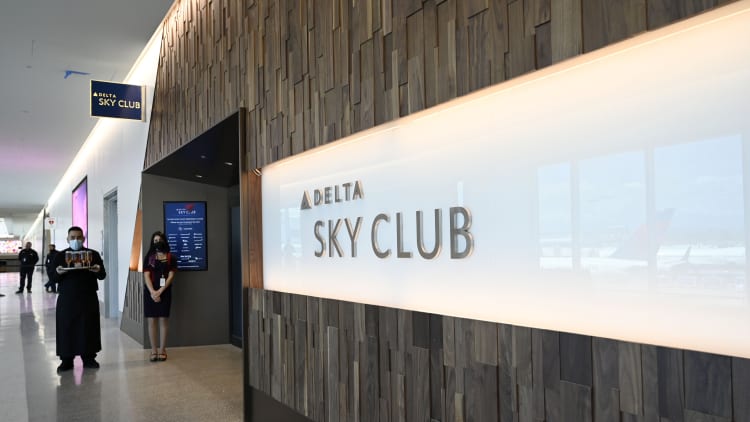Alaska Airlines planes.
Anadolu | Anadolu | Getty Images
Alaska Air Group expects to grow profits by $1 billion through 2027, and plans to ride the wave of high-end travel demand to get there.
Alaska closed its $1.9 billion acquisition of Hawaiian Airlines in September, less than a year after inking the deal that gives it access to routes across the Pacific and wide-body airplanes such as the Boeing 787 Dreamliner and Airbus A330. The two brands are operating separately.
The airline on Tuesday laid out plans for a global expansion that aims to take on larger rivals like Delta Air Lines, which is already facing increased competition for premium customers from United Airlines.
Alaska’s first step: launching nonstop service between its home hub of Seattle-Tacoma International Airport and Tokyo’s Narita International Airport in May on Hawaiian’s Airbus A330-200s, and between Seattle and Seoul’s Incheon International Airport in South Korea next October. Tickets for the new Tokyo flights go on sale Tuesday, while fares for the latter route go on sale in early 2025.

Alaska Air and S&P 500 performance
By 2030, Alaska plans to serve at least a dozen international destinations from Seattle using wide-body planes, reshaping the carrier that has long focused on shorter routes from the West Coast.
The carrier said Tuesday that it authorized a $1 billion share buyback.
Alaska also forecast pretax margins of between 11% and 13% in 2027 and per-share earnings topping $10. In October, the company estimated 2024 earnings of between $3.50 and $4.50 a share, including Hawaiian’s results. It raised its fourth-quarter earnings estimates to 40 cents to 50 cents a share, up from a previous outlook for 20 cents to 40 cents.
Alaska’s shares have gained nearly 40% so far this year, more than the S&P 500’s 27% gain through Monday’s close. Shares in the airline were up more than 13% in early-afternoon trading Tuesday after it released its long-term plans, hitting a more than three-year high.

The carrier is also launching a new “premium” credit card with its partner Bank of America, the latest co-brand deal designed to bring in revenue from customers even when they are not flying.
Alaska is evaluating its premium seat offerings across the fleet. Chief Financial Officer Shane Tackett told CNBC that the airline is looking to upgrade options specifically on Hawaiian’s Airbus A330s, with more customers willing to pay up for more space and comfort during travel.
“When you look at the past two or three years, most of the growth in revenues has been in those areas of demand and I think it’s probably going to continue,” Tackett said. “We have a really good base main cabin product … but more people are wanting the opportunity to get into premium economy or first class and we need to serve that demand.”

More seats than ever in first class and premium economy are being bought outright by customers rather than being filled with free upgrades, Tackett said.
Alaska’s rival Delta Air Lines, whose 24% domestic-passenger market share is second to Alaska’s 55% in Seattle, has also noted that shift in demand for its first-class seats. Delta has a bigger share of international passengers from the airport, however.
Alaska said it plans to offer a new lounge at San Diego International Airport. On Wednesday, Delta said it is opening its Delta One Lounge in Boston, its third after locations in New York and Los Angeles opened this year, dedicated to customers traveling in its highest-tier cabin.
Meanwhile, Tackett told CNBC that he expects more shifts in Alaska’s deliveries from Boeing.
A door plug blew off one of Alaska’s nearly new Boeing 737 Max 9s in January after it left the manufacturer’s factory without key bolts in place. The near catastrophe and stepped-up quality checks have slowed Boeing’s output and deliveries to airline customers such as Alaska, United and Southwest.
“I think they’re making progress. It’s not going to happen in a week. It’s going to take time,” Tackett said about Boeing, whose new CEO Kelly Ortberg is tasked with stabilizing the plane maker. “We’re in a position where we need to be very focused on helping them understand that quality is the most important thing; it’s way more important to us than rate.”
Boeing delivered just 13 aircraft last month, a tally that was affected by the nearly two-month machinist strike that halted production of most of Boeing’s aircraft.
Boeing said Tuesday that it has resumed 737 production and said output at its Everett, Washington, factory, where it makes wide-body aircraft will start in the next few days.






